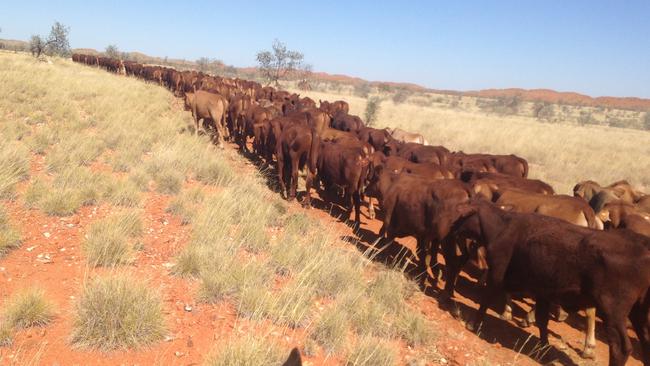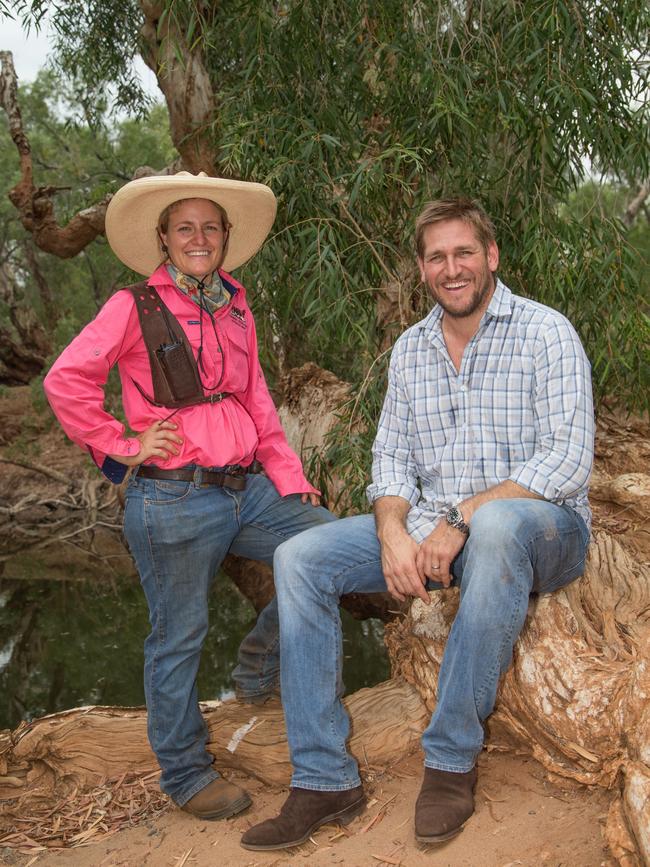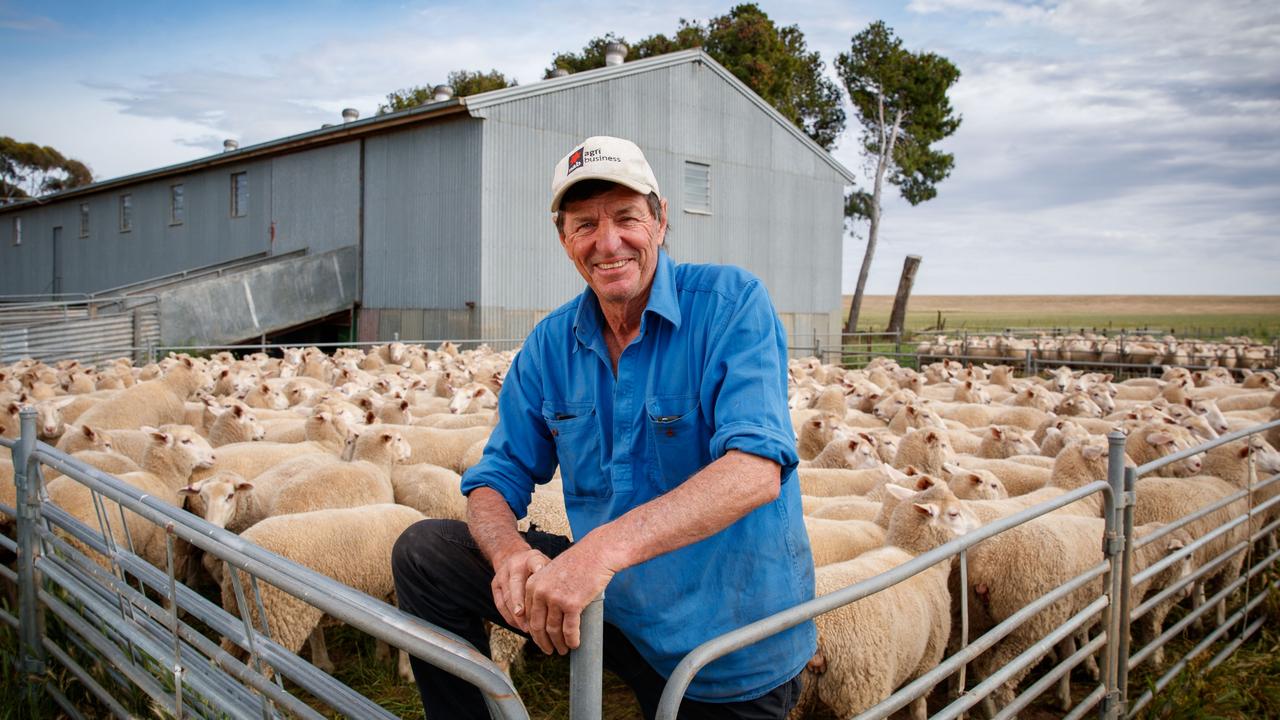Annabelle’s Outback Beef is the pride of the WA Pilbara
CONSUMERS are taking a liking to beef grown on remote Yarrie Station, writes SARAH HUDSON.

THE Pilbara, in the north of Western Australia, is known for its ancient, red earth, rusted from iron ore.
“There’s something special about arid desert and red dirt,” said Annabelle Coppin, who is the fifth generation to run the 250,000ha Yarrie Station, north of Marble Bar.
“It’s clean and it responds instantly to rain. It contrasts against the white cabbage gum trees, the green spinifex grasses and the rocks, which come in all colours, even purple at night.”
If you could eat the Pilbara it would probably taste like Annabelle’s value-added Outback Beef.
“(Celebrity chef) Curtis Stone came up here last year to cook our beef and he commented it tasted different, like natural minerals. Customers say it tastes like beef did when they were young,” she said.

“Like wine has a different story depending on region and climate, beef is the same, but we don’t market it properly. It’s just a heap of clean skin with no story.”
Since she bought the station from her parents, Lang and Ann Coppin in 2015, she has made it her mission to tell the story of the beef, not just the taste, but the pastoral story of the region.
In addition to the 250,000ha home farm, six months ago the Coppins leased a further 200,000ha, as well as their long-term lease on a 1000ha property at Badgingarra, in the midwest of Western Australia, used for fodder crops and finishing cattle.
On these properties they run 3000 breeders, Droughtmaster-crosses (including Shorthorn and Brahman.
ALL HANDS ON
THE mother of one-year-old daughter Tanami runs the station with the help of her mother, as well as about four permanent staff. Husband Thomas owns a pub in Marble Bar, where he works.
For most of the station’s recent history, they have sold through the live export market, from young bulls to Israel, heavy steers to China and heifers to Indonesia, as well as occasional spot sales through the domestic market.
Annabelle said the idea for value-added beef came about a decade ago — before she travelled on her Nuffield Scholarship in 2007-08, and before working with Meat and Livestock Australia, predominantly the Middle East.
But it wasn’t until three years ago Outback Beef got off the ground, now with two distinct markets.
The first and biggest market is sub-branded Yarrie Station Beef, for which about 50 animals a month, at more than 400kg liveweight (200kg dressed weight), are processed and sold as whole carcasses and fed to mining workers in the Pilbara.
So far they are supplying about 70 per cent of BHP’s Pilbara beef catering needs.
“In the past, most of the mines used interstate beef with no local connection, but now BHP is using a local product with a good story. We want to get the Pilbara back to the Pilbara,” Annabelle said.

“For us it’s a challenge having to move whole carcasses and we’re trying to change that image. This took some time to juggle, but is now working for the mining camps. We had to explain to BHP chefs the use of different cuts.”
The second, smaller market sees about 10 carcasses a month sold in four different boxed beef packs, direct to customers through hubs in the Pilbara and Perth.
The packs include “luxury cuts” sold in “Pilbara Premium”, through to the “Happy as Yarrie”, a mix of premium and family-friendly, home cooked cuts, and the camping-style burger, sausage and steak pack.
UNIQUE OFFERING
ANNABELLE said there were three reasons to create Outback Beef.
“We live in a unique part of the world and produce a special product with a different taste and so much potential,” she said.
“It’s also about creating a more flexible, stable market aside from traditional spot domestic and live export markets.”
A key reason was to build “social licence and trust” in the face of such issues as the live export debate and animal liberation.
“After the live export issue there were some people that thought a bad minority was the majority and so we need to stand up and say that’s not true and when we do that, there needs to be trust,” Annabelle said.
“You need to be who you are and genuine. You have to build a connection with people — which we don’t normally do because we’re so busy farming.
“It’s about connecting with the consumer so they also stand up and say we buy our beef from these people and what they’re saying is true.”

Yarrie Station cattle are antibiotic free, with no use of hormone growth promotants.
Mobs on northern properties, which join naturally throughout the year, feed on a spinifex base, with native grasses, shrubs, vines and vetches, depending on the season.
Average annual rainfall is 300mm and this season looked like it would fail until they received about 130mm in March.
For about four months, cattle are finished on the southern property, where there are fodder crops of oats and barley and pastures of clover, ryegrass, and perennials of panic and rhodes grass.
Supplementary feed is bought “only when necessary”, on average about two months of the year.
Yarrie Station operates an electronic herd recording system that enables full traceability of individual animals, recording their life cycle and industry performance.
Annabelle said she would like to introduce an on-farm welfare assurance system in the next three years, “which would not just be filed on a shelf, but would be interactive, through the whole supply chain”.
In addition to their environment management plan, she is also working to introduce more environmental measures.
“The landscape now is more resilient, but we need continuous improvement in this area and we need to get better at measuring that,” Annabelle said.
SPINNING A YARN OF NICHE SUCCESS


